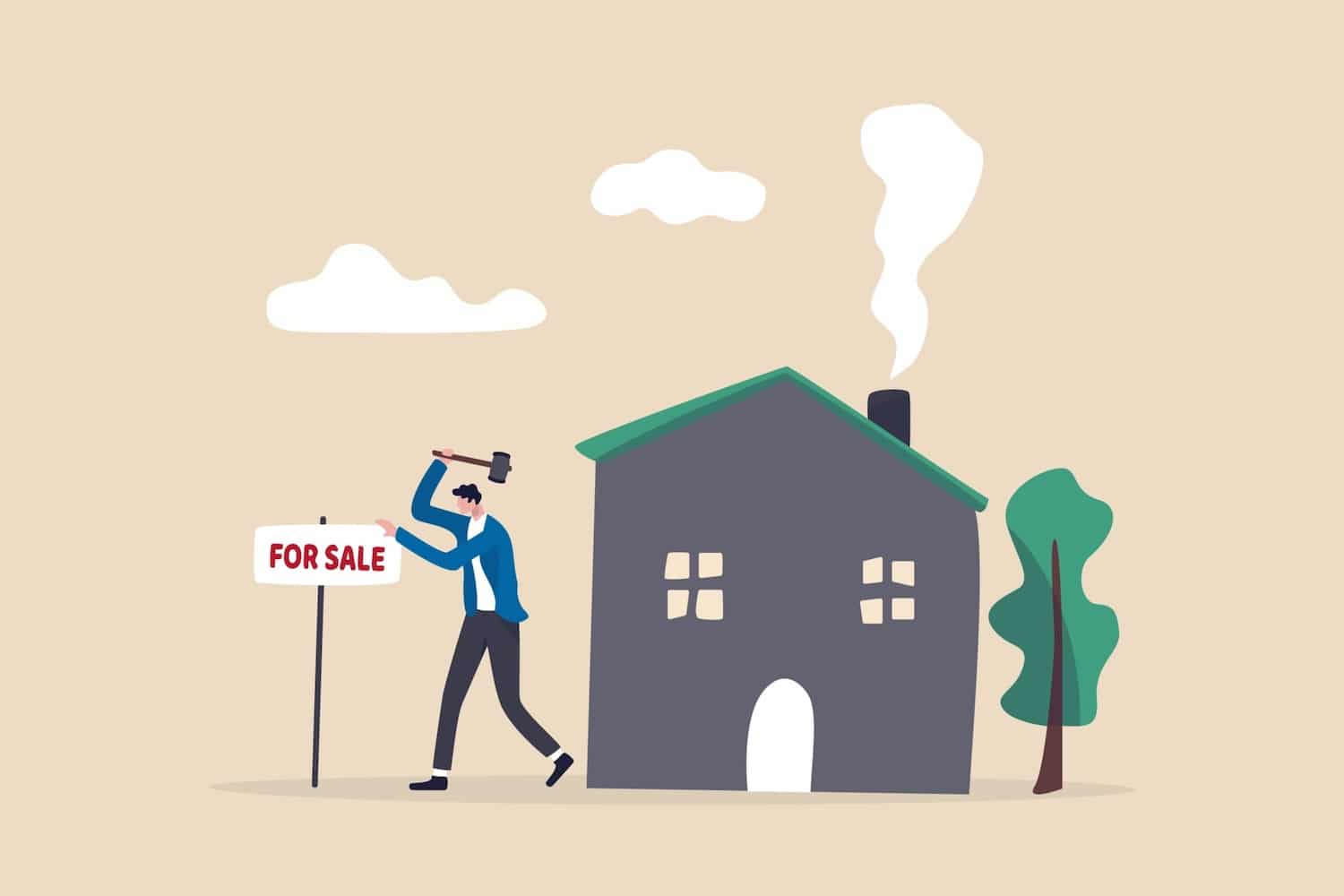Social housing in England provides affordable living spaces for a diverse group of tenants, often including low-income families, older people, and individuals with disabilities. Investors looking into this social sector must understand who these tenants are and how their demographics shape the market.
This diversity impacts investment strategies, property management, and community development efforts. Recognising these groups’ unique needs and challenges can help investors make informed decisions, ensuring both social impact and high financial returns.
Social Housing History
Social housing within the UK isn’t new and dates back as far as the medieval times when charitable housing providers gave shelter to the elderly, infirm and those who were less fortunate. Its history has significantly impacted the demographics of social housing, shaping who lives in these properties today. Over the centuries, social housing has evolved, addressing the needs of society’s most vulnerable members. This historical context has led to a diverse tenant base, reflecting broader societal shifts and economic trends.
The first big breakthrough for social housing came in 1919 with the Christopher Addison Housing and Town Planning Act. The act occurred when soldiers returning from war needed a safe, affordable, comfortable home. These were the largest demographic to occupy social homes in 1919. The act made local councils take responsibility for assessing local housing needs and forming a plan to meet these needs. The response was for the council to start building the first-ever council housing.
World War II greatly impacted the council house programme due to the devastation it created. Councils were building, on average, 147,000 homes a year, which led to social housing becoming mainstream in the 1960s. At this point, a quarter of the UK housing was council housing.
The introduction of the Housing Act in 1974 then introduced significant public funding for housing associations. Most of the social housing was still owned by councils; however, by 1980, there were more than 400,000 homes in housing associations in the UK.
The Housing Act of 1988 allowed councils to transfer their ownership of homes to housing associations, which many local authorities did. The Right to Buy was introduced in 1980, which allowed council tenants to purchase the home they lived in. This reduced the amount of social housing overall.
Funding for affordable homes saw a huge reduction of 60% in 2010, and funding for new socially rented housing stopped completely. Government funding shifted to supporting first-time buyers, investing in shared ownership and Help to Buy schemes. Housing associations used financing of their own to keep supplying socially rented homes. However, the reduction in funding had an impact and meant fewer were available.
Over the years, the sector has evolved to meet the needs and demands of the UK today, and many organisations are still going strong today, whilst more are being created due to the high demand for more social housing.
Currently, the prominent occupiers of social homes are:
- People experiencing homelessness
- Families and people who can no longer keep up with the cost of living in private accommodation
- People seeking to leave dangerous situations or countries.
It is widely reported that the UK is facing a housing crisis. Homelessness is on the rise, and private rent is becoming more and more unaffordable, as is the increasing interest rate. Due to these factors, many people are being priced out of buying their own homes. Social housing solves this problem, but the demand is high, with many still waiting. On 31 March 2022, the UK Government recorded that 1.21 million households were on the local authority waiting list for a social housing property, a 2% increase compared to 2020/21.
The following statistics can be found in the Social Housing lettings in England, tenants: April 2021 to March 2022 report from the Department for Levelling Up, Housing and Communities.
New Social Lettings
Social housing saw significant activity in the 2021/22 period, with nearly half a million people (487,000) across 267,000 households receiving a new social letting—an increase from the previous year’s 435,000 people in 237,000 households. A noteworthy 65% of these households were newcomers to the social housing sector, previously either struggling with private sector rents, living in temporary shelters, or without a home.
A majority, 59%, of those given new social lettings were already on waiting lists in their local areas, emphasising the demand and need within specific communities. Additionally, 17% of social lettings went to individuals officially recognised as homeless, with 14% of new tenants moving from temporary accommodation into more permanent social housing.
Employment status among social housing tenants showed that 38% were working in 2021/22, marking a 36% increase from the year before. This change reflects a mix of employed, unemployed, and retired individuals, those unable to work due to illness, and those not seeking employment within social housing demographics.
Regarding health needs, 43% of households receiving a new letting reported at least one member with a long-term physical or mental condition, with mental health issues being the most commonly reported. This highlights the critical support social housing provides to individuals with health challenges. 64% of households expressing a need for accessible housing were accommodated, showing a commitment to meeting specific housing requirements and improving living conditions for tenants with mobility and other physical needs.
The Demographics of Social Renters
The demographics of social renters reveal that these individuals and families are more likely to experience certain living conditions and socio-economic backgrounds than those in other housing sectors. These tenants, benefiting from the affordability and stability of living in the social rented sector, often include people on lower incomes and those requiring specific support services.
Age
The lead tenants in new social lettings tend to be younger than those across the social housing sector. Previously, 46% of lead tenants were aged 55 and over, and only 18% were 16 to 35 years old. In any new social housing lettings, the statistics were almost flipped. Only 26% of lead tenants were aged 55 and over, and 45% were aged 16 to 35.
This comes down to the fact that most social housing tenancies run for an extended period. Most social renters have lived in their current properties for over 13 years, and the average private renter only stays in the property for around 4 years.
Marital Status
79% of new lettings are in single adult households, 59% of these adults are without children, and 21% have children. These statistics have remained the same over the last 10 years. The high percentage of new lettings to single adult households, with a significant majority without children, indicates a trend towards smaller household units within the social housing sector. This could reflect broader societal trends, such as increased single living and the challenges single adults face in accessing affordable housing.
92% of the single parents moving into social housing were women, with only 8% being men. The overwhelming majority of single parents in social housing being women highlights a gender disparity that might reflect both societal norms around caregiving responsibilities and the economic challenges women face, particularly single mothers, in securing affordable and stable housing.
32% of most new lettings have at least one child, and 15% are a couple, which suggests that social housing remains an essential support for families, offering stability and affordability to those with children. Meanwhile, the relatively low percentage of couples among new lettings could indicate a range of factors, including the allocation policies of social housing providers or the specific housing needs of single adults and single parents.
Age and Gender
The age and gender of the occupant significantly influence the allocation of social housing, particularly in types like Supported Housing designed for specific needs, including the elderly, disabled, or sick. A notable trend within social housing is the younger age and predominantly female demographic of its tenants.
In the 2021/22 period, children aged 0-15 represented a substantial 35% of new social lettings, indicating a significant proportion of families with young children in social housing. Furthermore, the under-35 demographic accounts for 68% of tenants, showcasing the younger profile of social housing residents.
Highlighting the gender aspect, 71% of lead tenants in the 16 to 34-year-old bracket were women. This statistic shows the prevalence of single mothers within social housing, reflecting the prioritisation of single parents, who are often mothers, in social letting allocation.
Ethnicity
The ethnic composition of new social housing lettings shows a clear predominance of tenants from a white ethnic group, who made up 81% of new listings. This significant majority indicates that white ethnic groups are the primary beneficiaries of new social housing opportunities.
In contrast, Black households represent a smaller share, accounting for 8% of the lettings, while Asian households make up an even smaller portion, at 5% of the listings. The data also highlights the presence of multiracial tenants in the social housing sector, though they constitute the smallest segment of new lettings. This distribution reflects the diverse ethnic backgrounds of social housing tenants.
Nationality
The nationality breakdown of lead tenants in social housing shows that 90% are UK nationals, illustrating a preference or allocation towards residents with UK citizenship. European nationals make up a smaller fraction, accounting for 5% of lead tenants, indicating a modest presence of Europeans in the social housing sector. The remaining 5% of lead tenants come from countries outside the UK and Europe, showcasing the global diversity within social housing. However, these groups represent a smaller portion of the overall tenant base.
Health and Abilities
In the UK, 43% of households in social housing include at least one person dealing with a long-term physical or mental condition expected to last a year or more. This statistic highlights the significant role social housing plays in supporting individuals and families facing health challenges, underlining the sector’s importance in providing stable housing solutions for those with ongoing health needs.
How do social tenants impact social housing investments?
The demographics of social renters are having a huge impact on investments. There is a more considerable demand for social housing, which means that the opportunity for investment within the social housing sector is on the rise. The people on the social housing waitlist all sit within the above demographics. Because of this, investment in social housing within the UK is positively promoted as it can help address some of the UK’s social issues, which is why more funding is given.
The social and affordable housing market accounts for 33% of the homes occupied within the UK. There is a massive shortage of social and affordable homes, and it is estimated that £250 billion is needed to respond to the shortage. There is a lack of good quality social homes, and the undersupply sits at around 100,000 homes, which is why investment in the social housing sector within the UK is so important.
Over the last decade, more investment has been given to respond to the ever-increasing demand and need for social and affordable housing. There are some attractive characteristics associated with social and affordable housing. There is a positive link to inflation because the UK government’s rent-setting regime is kept in line with inflation and can be expected to rise steadily over time. The sector delivers stable returns on investments due to the above demographics constantly increasing, and a large proportion of the return on investment also comes from government sources, which makes it much more stable.
Knowing who lives in social housing can help investors tailor their investment strategy. For example, many tenants are families, so investors should focus on multiple occupancy properties. This approach not only aligns with the current demand but also anticipates future needs as the trend towards family occupancy grows. By focusing on multiple occupancy properties, investors can ensure their portfolios are well-suited to meet the market demand, thereby increasing the potential for stable returns.
Private Investment in Social Housing with Yield Investing
Navigating investing in the UK property market has its challenges and can be complex. However, it can also be gratifying and, most importantly, profitable. Social housing investments in the UK housing market are the option with the least risk but the most reward. It takes all the stresses out of being a private landlord and offers a guaranteed yield, which private property investment can’t always provide.
At Yield Investing, we ensure we align with local needs, abide by regulatory frameworks and take the time to foster collaborative relationships. Our investors can contribute meaningfully to addressing the UK’s housing challenges while achieving sustainable, high financial returns, with none of the stresses involved when owning private property.
Are you ready to start this socially impactful investment journey? Connect with our team at Yield Investing today, and together, let’s shape a brighter future.


